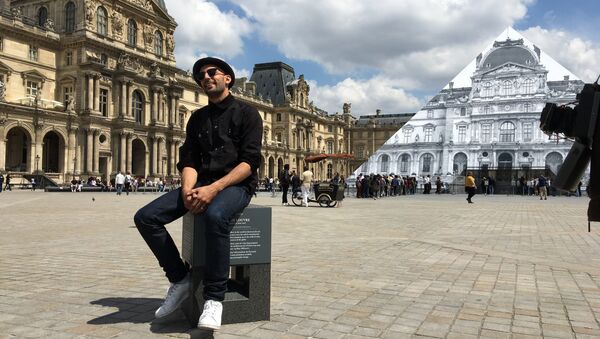At a distance, the museum now looks as it did before the glass and metal pyramid was built in the 1980s, because JK has covered the front of the modern structure with black and white photographs of the museum's façade.
As a result, the pyramid blends in with the rest of the historical museum, the world's biggest, which opened its first exhibition at the Louvre Palace in 1793.
"What I really wanted to do here was to create a piece of art without a face or portrait, but to show the interaction between people. If you turn away from the pyramid you see that people are looking for a corner, the right place to take a picture. They are surprised by this deformed photograph, and then they understand the point of it," JK said.
"From a technical point of view, it's just what is behind (the pyramid). I photographed it and then stretched it so that the image is visible from a single point, this technique is Anamorphosis."
"Ultimately, this is an allusion to selfies, it is an allusion to all those who come to take a photo of the pyramid but don't even look at it, they turn their back on it," he explained.
"If you travel around the world you see that the selfie and the selfie stick have become a part of our universe and people come to do sightseeing but they don't look at the sights. I had a desire to take away the pyramid so that people are left alone, with the thought of what they will do with that photo."



